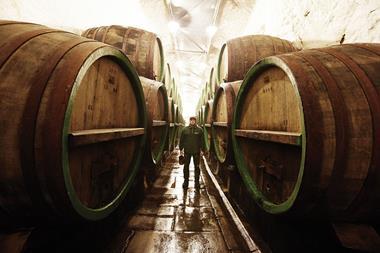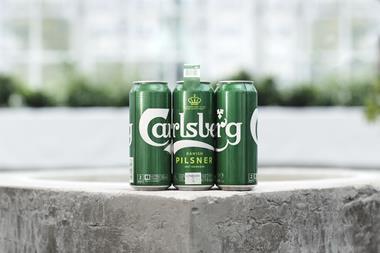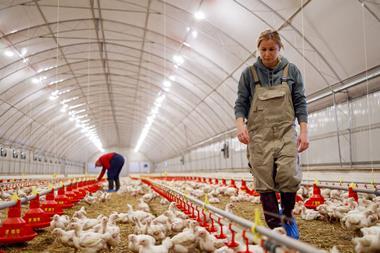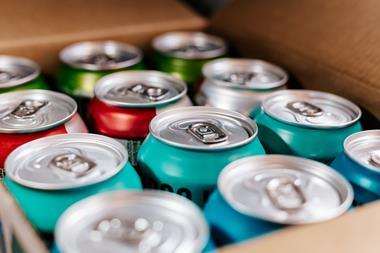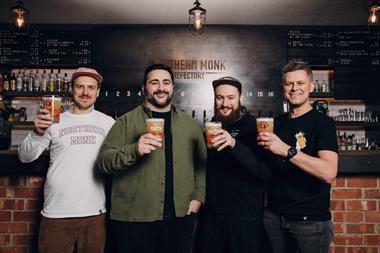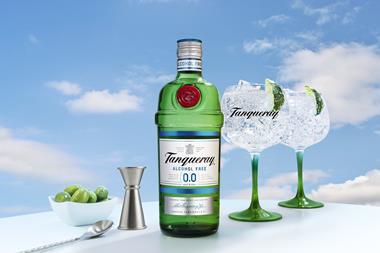There is a growing sense of optimism about the beer category this year. It’s not just the chancellor’s reduction in beer duty or Government data showing that anti-social drinking is on the wane.
The industry is feeling confident because consumers have more disposable income due to low inflation and rising wages.
Most important of all, regardless of how much money they have in their pocket, they are making more discerning choices. We see this in the fact that the growth in the market is driven by the world/discovery beer category, which is up 9% in value, versus total lager up 3%, as consumers seek out more interesting products.1
This behaviour of wanting to enjoy each drinking occasion with the very best sourced and served beer their money can buy is now ingrained. It’s not unique to the beer industry – it’s why a recent analysis from OC&C Strategy Consultants found that one of the UK’s fastest growing retailers was Waitrose. Consumers want the best products, whatever the price point.
It’s a great opportunity for all of us involved in the beer category because it means trading up can accelerate. Trading up is good news for all of us – bringing greater value and higher margins to the whole of the supply chain. However, it’s also challenging. In some ways it’s daunting to imagine that the scale of change we’ve seen in more choices and new formats during the past 10 years will accelerate.
In this piece, I want to call out how I think the beer category will evolve this year and how we can all optimise the growth opportunity before us.
There will be two key battlegrounds for helping more discerning consumers decide what brands to buy. The first is provenance. From better ingredients to the science and art of the brewing process, in today’s market, authenticity is absolutely critical. The second is the drinking experience. How a beer is stored, poured, and served enhances the occasion and the taste. Both are mutually beneficial and a source of real competitive advantage for those who can deliver them.
Staff recommendations
World beer has energised the UK market with growing sales throughout the recession and into the recovery. People go to the pub to actively try new tastes and expect a diversity of beers on tap. The on-trade range has increased by 80% during the past three years and, similarly, the off-trade range has expanded by more than 60%. However, shoppers and drinkers can be confused by the ever-broadening offer and need help and guidance with their choice. More than 40% of consumers say they use bar staff recommendations to help them choose drinks in the on-trade. So it’s critical that the people serving brands can talk knowledgeably about them.
This is why a clear story and transparency on the process from field to glass will become more of a game-changer. Visiting the brewery in Plzen, in the Czech Republic – where Pilsner Urquell, the world’s first golden beer is crafted – with our customers is an outstanding way for us to demonstrate what our beer is all about. There has been great interest in the way we make Pilsner Urquell, which is unchanged since 1842. In addition to the modern production, we produce the beer in parallel in the traditional way; lagered in open-top wooden barrels in the cellars deep below the brewery. This means we can continuously benchmark the taste and quality of the modern production against the original brew.
Source of insight
Provenance, of course, is also part of the appeal behind the explosion of smaller brands within craft and speciality. But it’s great to also have heritage and history behind you as well. Take Peroni Nastro Azzurro – the recipe for this beer was carefully crafted in 1963 to provide a crisp, refreshing experience and matches wonderfully to Italian food. To achieve that taste for the Mediterranean palate, the Peroni family added one quarter of Italian maize to three quarters malted barley to create the unique blend. The maize used is a carefully selected Italian variety: the Nostrano Dell’Isola, developed in the Lombardia region in north Italy. This maize is of the highest quality, and is exclusive to Peroni.
These are a couple of examples of brands that inhabited the craft space well before the recent surge in craft beers. They provide a valuable source of insight into what consumers want: authentic beer,
carefully brewed with top-quality ingredients. There is huge untapped potential to deliver against consumers’ increasing thirst for knowledge about beer. When respected wine critics like Jamie Goode start to devote their copy to the aromas and texture of beer, that’s exciting. I think
there is a huge untold story of tradition, artistry and craftsmanship around beer. If we tap into consumers’ curiosity and desire for quality, we can build loyalty.
Directly linked to the enjoyment of beer is the serve. The drinking experience will be ever-more important when it comes to consumers’ motivations for choosing beer brands. This trend will increase be-cause the occasions to spend more are merging. Some 60% of consumers will pay more for a drink that is made well, and an equal number will pay more for a drink that is a bit special or unusual.2
Disruptive collaboration
An example is our collaboration with Alan Yau’s new Chinese gastropub in Soho, Duck & Rice. For a few weeks now we’ve been offering Pilsner Urquell Tank Beer in the outlet. It’s delivered by special tanker directly from the brewery in Plzen and kept in perfect condition in bespoke crafted copper tanks on display on the ground floor of the new venue.
Each 500l tank will be refilled with fresh Pilsner Urquell every week and customers will experience the qualities of the world’s original lager and first golden beer, which features 100% Czech ingredients, a striking look and is delivered at the perfect temperature for a fuller, rounder malt body. We’re being deliberately disruptive and it’s working – 10% of consumers say they’ve had a drink in a Pilsner Urquell tank venue because of the tank. It’s also an opportunity to push value in the category.
There’s little point sourcing your beer well, and then failing to package it properly. It encourages me when I hear our customers say their clientele want Peroni Nastro Azzurro served in a branded glass. The proprietary glassware we provide alongside Peroni is helping our on-trade customers show that draught can be premium too.
Later this year, Miller Brands will mark 10 years of leading the growth of world beers in the UK and helping change the way people think about beer. Evolution of the category will continue and at pace – we hope our brands, our insights and our innovation make us a valuable and insightful business partner for the next 10 years too!
1 CGA Brandindex data to 27/12/14, IRI off-trade data to 31/01/15
2 Crowd DNA on-trade behaviour research, November 2014

























